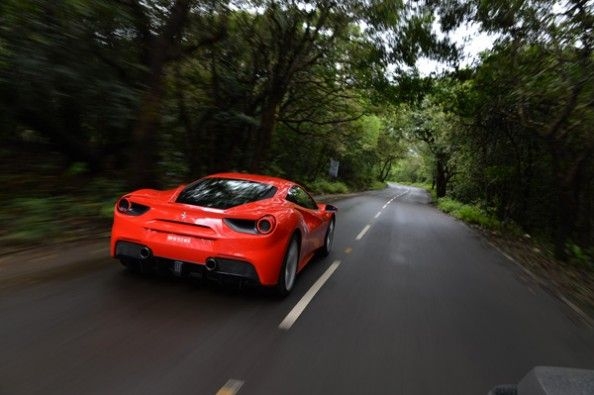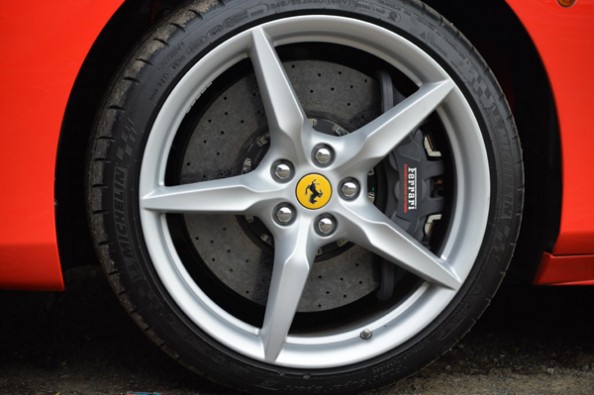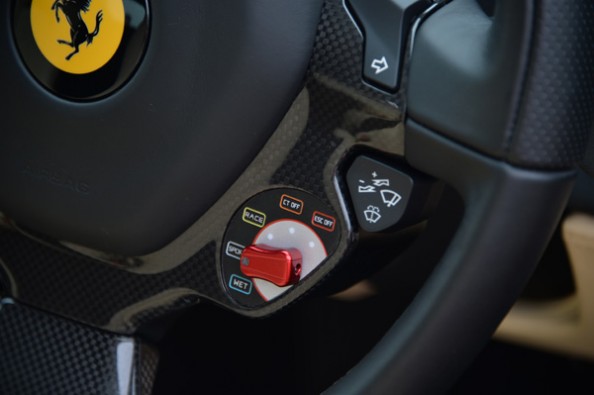
Introduction
There is no denying the appeal of a comprehensive test of one of Maranello’s most popular new cars. So, how does the Ferrari 488 GTB copes with our driving conditions? Can it be driven anywhere and everywhere? And just how much of its full potential can be used?
Even though the 488 GTB is an all-new car, its origins go way back to the V6-powered car called the Dino. Interestingly, the 308, the car that followed the Dino got a V8 and it has stayed that way ever since. The mid-engine V8 car line from Ferrari has been its most successful model. The next car in the line, following the 308, was the 348, and that set the template for longitudinally mounted engines.
Styling
The 488 uses quite a bit of aluminium and this is surprising because every other supercar maker is now using carbon-fibre all over. It appears as if Ferrari has mastered the aluminium use for its car’s tub, first seen in the 360 Modena, and has continued doing so. The use of aluminium hasn’t affected the 488’s weight, in fact with a few weight saving options it’s lighter than its biggest rival the Lamborghini Huracán.

The 488 GTB is designed by the Italian manufacturer’s own styling centre and not Pininfarina like the earlier models in the line. Just one look at the Ferrari makes it evident that the company let form follow function, with its enormous intakes and aero bits all over. Even the door handles act as fins to help guide air into the intakes. The 488’s styling is not to everyone’s taste, the 458 and the 355 are ranked as the best looking in this line of Ferraris.
The front-end is inspired by F1’s double spoiler, the design works together with the intake to guide air into the radiator. The lower portion helps push air under the car to help generate downforce. Ferrari’s new principle is ‘aero by subtractions’, which means unnecessary things from the car to improve downforce or reduce drag. We can see this at the rear; the car doesn’t have a traditional spoiler. The 488’s spoiler is integrated into the rear bumper keeping the drag low and the rear end tidy. The car can also be had with Ferrari’s optional nose lifter that raises the front end in just 4.5sec, a must for our road conditions even if it costs Rs 18 lakh.

On the inside
The base-spec 488 is pretty sparse; optioning the supercar is really expensive but increases its cool factor. Optioning up the Ferrari should not be a problem for most buyers, since they are buying a really expensive car in the first place. Just to give you an example of how expensive the option list is, the Scuderia Ferrari emblems on the fenders can set you back by around Rs 5 lakh.
The car’s interior remains very similar to the 458 Italia, with the dash angled towards the driver and similarly styled vents and controls. The steering wheel controls also remain similar with most controls on the wheel, which helped lose the traditional stalks. The drive select buttons are now vertically stacked instead of the horizontal layout on the Italia.

The large tacho in the instrument cluster has two LCD screens on both sides. These screens display info like speed, driving modes, temperature, navigation, entertainment and even pressure dials. This particular 488 was equipped with manual seats, lighter but supportive and comfortable. The car does have generous storage space, with cubbies and cupholders around the cabin and a decent boot. The AC kept us cool even on the hot day we were out with the car.
Performance
As with any Ferrari, its centrepiece is the engine. For the 488, the Italian company has developed a twin-turbo 3.9-litre V8. The turbos are twin-scroll units, with low-density titanium-aluminium alloy, spooling so quickly that there is close to no lag. Hit the accelerator in any gear and the 488 leaps forward with minimal delay. The car is so fast it feels as if you are being hit in the back with a roadroller. In our test, the car managed a 0-100kph time of 3.6sec, 0.6sec slower than Ferrari’s claimed 3sec time. However, our fuel octane level and standard tyres play a big part in this slower time.

We launched the 488 from a standstill and hit 200 in just 10.53sec, which is unbelievably fast. This doesn’t come as a surprise after seeing the spec sheet; the car makes 670hp and 760Nm of torque, huge numbers even by Ferrari standards. Adding to this insane performance is the incredible gearbox that shifts through gears very fast. Even after having this level of performance, the car is easy to drive in traffic at low speeds, and that’s exactly what one would want.
Handling
The 488 GTB gets its steering rack and adaptive dampers from the 458 Speciale however, they don’t feel alike. Ferrari has done this as the 488 is a more rounded car and less track-oriented like the Speciale. This makes the 488 an unintimidating and easy to drive on the road. Switching to the bumpy ride mode makes the ride quality soft and forgiving. The car has to be driven extremely carefully to protect the ultra-low profile tyres from cuts. The straight line ability of the supercar was rock solid when taking on faster sections of the expressway. Not only does the 488 change lanes beautifully, it can almost be driven in a ‘hands off’ manner, with a light hand on the wheel.

Switching the car to ‘Race’ mode changes everything; the car is balanced and allows one to enter corners at high speeds. In this mode there is almost no understeer, Ferrari’s Side Slip Control System (SSC2) in this mode allows one to enjoy a bit of tail-out fun. The Italian manufacturer manages to blend technology and performance very well.
Fuel Efficiency
The 488 returned a fuel efficiency figure 4.5kpl however, this is a Ferrari and we shouldn’t really be bothered about things like fuel efficiency.

Infotainment
Just like fuel-efficiency, should we really be bothered about the infotainment in a Ferrari? If you do feel the need to do so, there are stereo choices, including one by JBL Professional. The car being tested had the standard sound system and the quality was decent. The dual screens (on either side of the tacho) are confusing until you have worked them out. Controls for the system are on the dash and the back of the steering which are slightly confusing too, but easy to use once figured out. The system is decent but does not match the VW-supplied unit of the Huracán in terms of usability.

Should I buy one?
Ferraris are supposed to look pretty, sound amazing and go extremely fast. If you aren’t too sure about the look pretty part, you can be sure as hell about it sounding amazing and going extremely fast. Of course it is really expensive – ₹3.88 crore (ex-showroom, Delhi) for the base trim – but money aside, it’s a Ferrari. With its other worldly performance and handling, driving the 488 is deeply emotional. Furthermore, its lift feature and good ride makes it feel at home even on our roads.



















